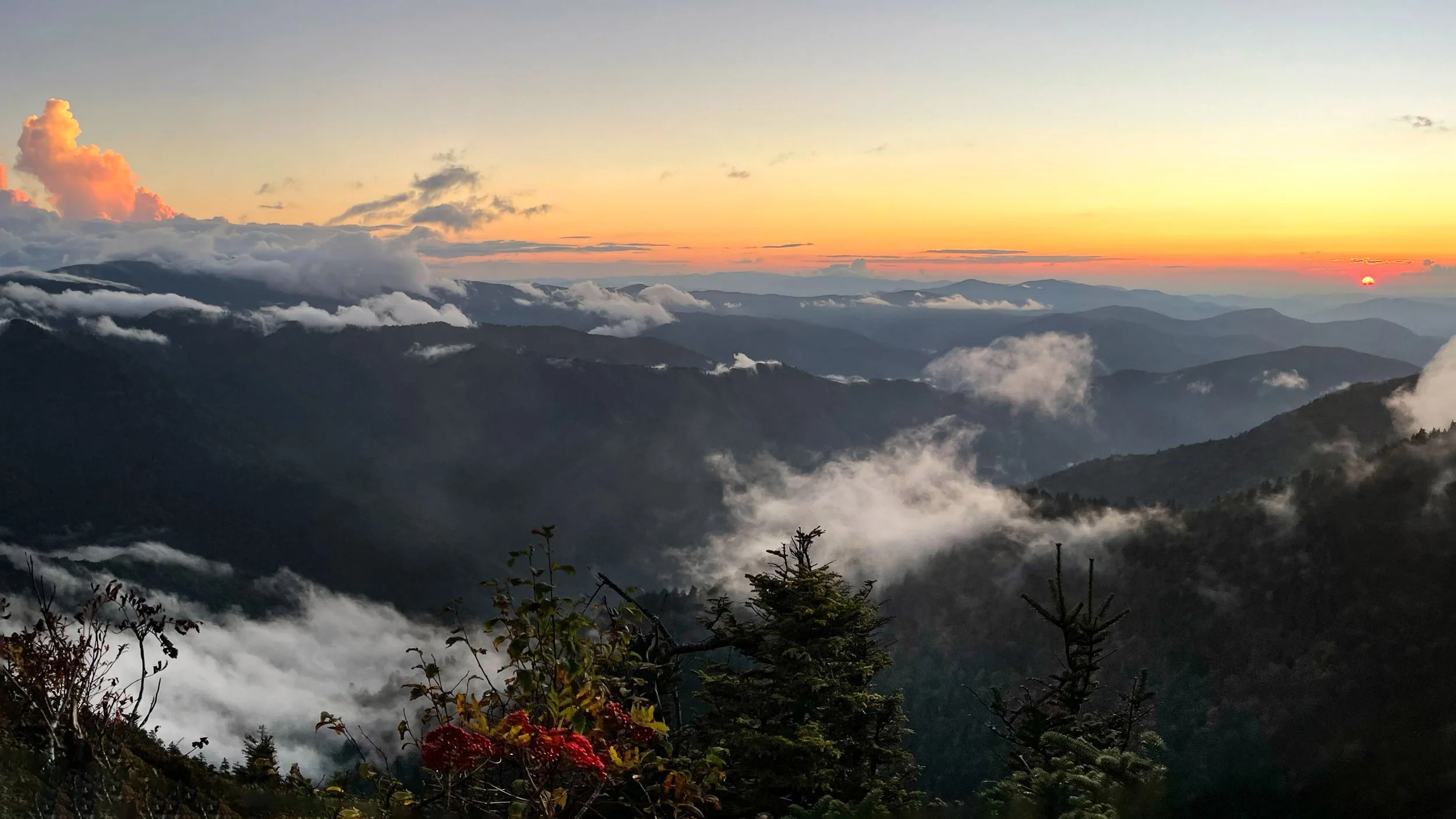Loving a Park to Death
The Great Smoky Mountains National Park faces modern-day threats
A sunset view from Cliff Top Viewpoint near the LeConte Lodge south of Gatlinburg, Tennessee. As the third-highest peak within the Great Smoky Mountains, Cliff Top provides an excellent view of the Gatlinburg-area lowlands, which set the stage for gorgeous sunsets. Image credit: Jeffrey Rose, edits by Rachel Lense for The Science Writer
by Jeffrey Rose
February 21, 2024
In mid-October, trees in the Great Smoky Mountains National Park spin their verdant leaves into gold. The explosion of red, orange, and yellow hues attracts thousands of visitors daily. These “leaf creepers,” as they’re known by local hiking guides, can slow traffic on U.S. Highway 441 to a standstill. Creepers come for pictures of the cascading fireworks, but it’s the biodiversity hidden in the peaks and valleys that spurred the park’s UNESCO designation as a Biosphere Reserve and a World Heritage Site. The Smokies’ unparalleled collection of ecological niches, which evolved over hundreds of millions of years, now faces a new series of challenges.
The park is nestled in the southern Appalachian Mountains, spanning the Tennessee-North Carolina border. The mountain range — the oldest in North America — was formed more than a billion years ago when the supercontinent, then the only land mass on the planet, pulled apart under tremendous pressure from the Earth’s core. As water flowed from rivers and streams into the widening split, prehistoric aquatic trilobites, ostracods, and bryozoans frolicked in the deep Ocoee Basin. Layered with deposits of sediment, their skeletons coalesced with sand and silt into bedrock, sandstone, and limestone.
About 470 million years ago, the continental plates then reversed direction and the edges of the basin began drawing back together. When they collided, colossal layers of bedrock slid from west to east, piling rocks 4,000–6,000 meters high over the surface of ancestral North America, creating the Appalachians. The Asian Himalayas, home to Mount Everest, are growing much the same way today.
A wooden bridge stretches over the West Prong Little Pigeon River, a fork of the larger Little Pigeon River, which flows through the heart of the park's lowlands. Hikers cross the bridge to begin their trek to the Chimney Tops, needle-like mountains that can be seen along one of Great Smoky Mountains National Park's most popular trails. Image credit: Jeffrey Rose, edits by Rachel Lense for The Science Writer
The continental plates eventually separated again, this time along a fault line forming what is now the Atlantic Ocean. When the sea enlarged during the Triassic Period, around the age of the first dinosaurs, the Appalachians reached heights rivaling those of today’s Rocky Mountains. Acid rain, moss and lichens, and a quartet of ice ages flattened the peaks and carved the ridges and valleys that shape modern hiking trails.
The mountain ridge, which runs from northeast to southwest, established a corridor allowing plants and animals to migrate south as temperatures dropped. During the last ice age — between 1.1 million to 11,000 years ago — the ice sheet stopped a mere 200 miles north of what would become the Great Smoky Mountains National Park, preserving a rare, cold-tolerant, spruce-fir forest typically found in Canada. As glaciers retreated and the climate warmed, species returned north along the same footpath. The result is a diverse landscape where more temperate species thrive in the marshy, lower elevations of the park, and more cold-tolerant species can be found in its higher elevations. Within the park’s 800 square miles, ecosystems mimic those seen stretching from Maine to Georgia. Documenting what lives in those ecosystems sparked the Earth Day 1998 founding of the All Taxa Biodiversity Inventory (ATBI) project — the only one of its kind.
“The only way you’re going to protect the park better is if people understand the science of the park,” said Todd Witcher, director of Discover Life in America (DLiA), the nonprofit overseeing the ATBI.
Over the past 25 years, the project has identified more than 10,000 species previously unknown to the park and more than 1,000 previously unknown to science. DLiA coordinates teams of scientists, who take pictures and collect specimens that are then cataloged and reviewed by specialists against global databases. Rather than the warm-and-fuzzy mammals that usually draw tourists, like bears and elk, most of the newly described species are the unnoticed inhabitants that create the backbone of the park’s ecosystems: bacteria, fungi, insects, and amphibians such as salamanders. The park is known as the “Salamander Capital of the World” for its more than 30 species, including the fiery red Ocoee salamander.
“The wind sweeping over the mountains teases leaves off their branches. The leaves leap into the air, twirling to the ground where they crunch softly underfoot.”
Harmful invasive species are also tracked, such as the hemlock woolly adelgid, an insect native to Japan that has decimated the Appalachians’ hemlock tree population. Recently, DLiA has been watching for the Asian spotted lanternfly, which has annihilated crops and native plant species across the northeastern United States and reached Tennessee in September. Detecting these invaders allows National Park Service agents a chance to isolate and preserve native species like the hardwood hemlock.
Witcher typically sees tourists hiking quickly to their destination — a waterfall or a scenic view — and returning just as fast. He advises trekkers to instead slow down and absorb the amazing sights.
The wind sweeping over the mountains teases leaves off their branches. The leaves leap into the air, twirling to the ground where they crunch softly underfoot. In the mid-elevations, in sections ripe with sunshine, a sharp, blue-cheese smell permeates the air from skunk goldenrods clustered on rocky outcrops. Splotches of gray, green, and white lichens cling to tree trunks and rocks, sculpting complex shapes like coral. Witcher encourages hikers to inspect fallen trees and, should an interesting creature appear, snap a picture.
Park visitors can upload images to the popular iNaturalist app, which records their position. Will Kuhn, DLiA’s director of science and research, reviews submissions and sends them to ATBI scientists for vetting. Citizen scientists have used the app to help identify more than 100 species previously unknown to the park.
At dawn and on rainy days, the mountains are shrouded in mist. The park is a temperate rainforest, with high humidity and a low cloud bank. The clouds, however, are not just water vapor. The Great Smoky Mountains are part of the Blue Ridge Mountains, which got their name from blue-hued molecules called isoprenes that are released from millions of trees and other plants during photosynthesis. Since the early 1900s, a mix of car exhaust and industrial pollution has followed wind currents from urban areas across the U.S. to the ridge of the Appalachians, where the smog is trapped and concentrated. Most days, a whitish-gray haze now clings to the mountaintops. While the panoramic view suffers, the true danger lies in the high levels of sulfur and nitrogen that have been deposited in the soil at higher elevations. Both the soil and the streams that flow downhill are becoming toxic.


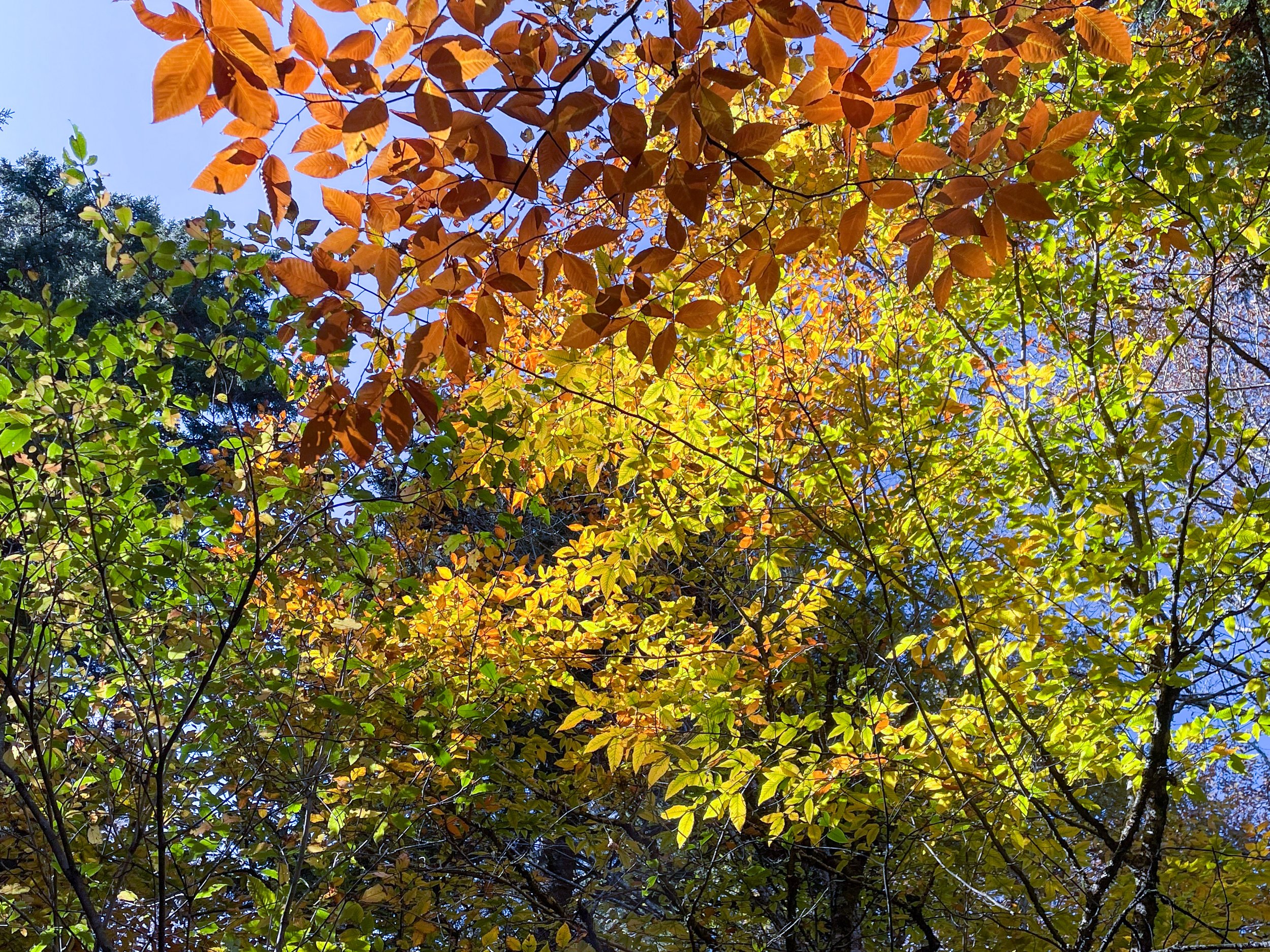
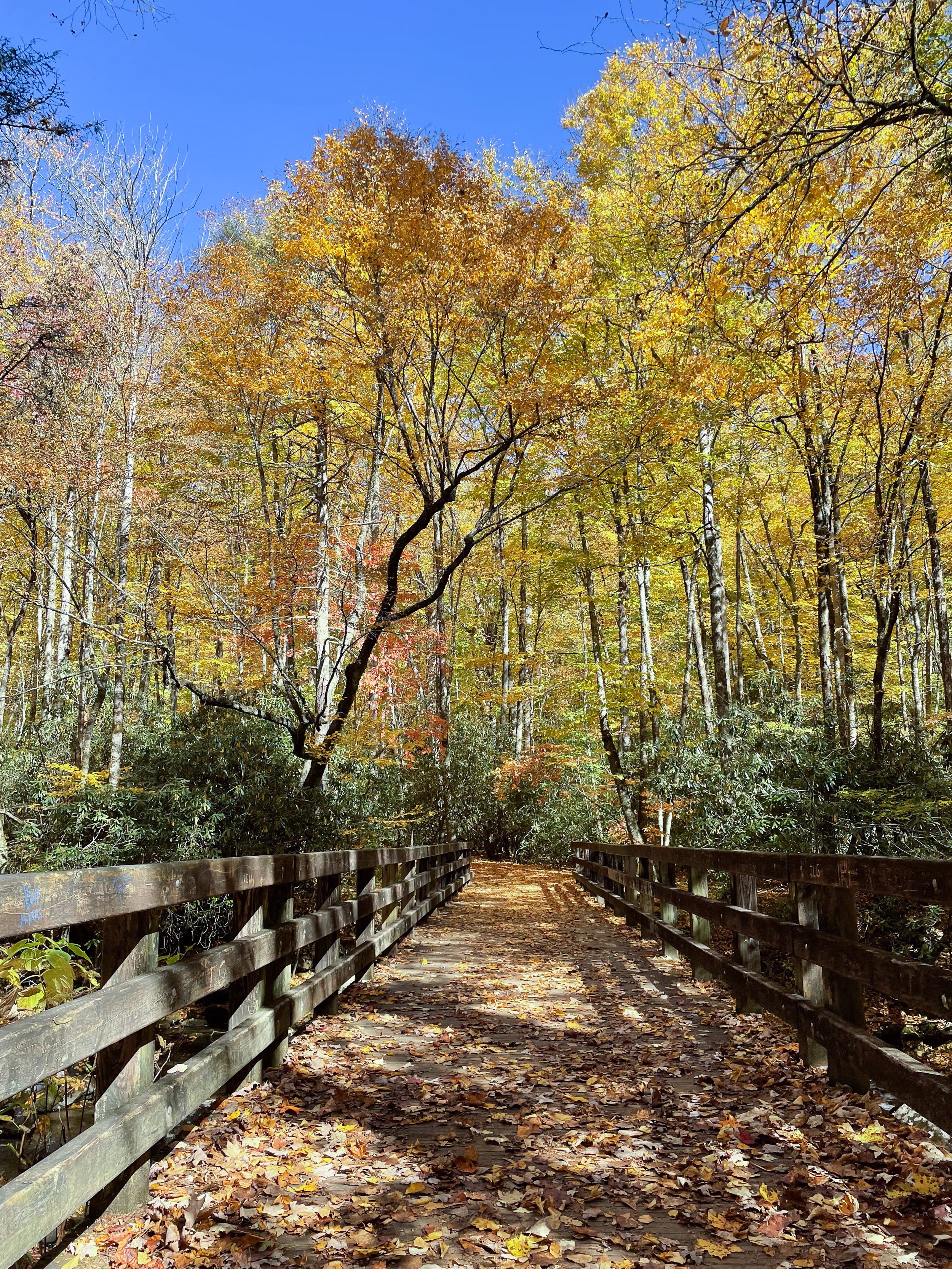
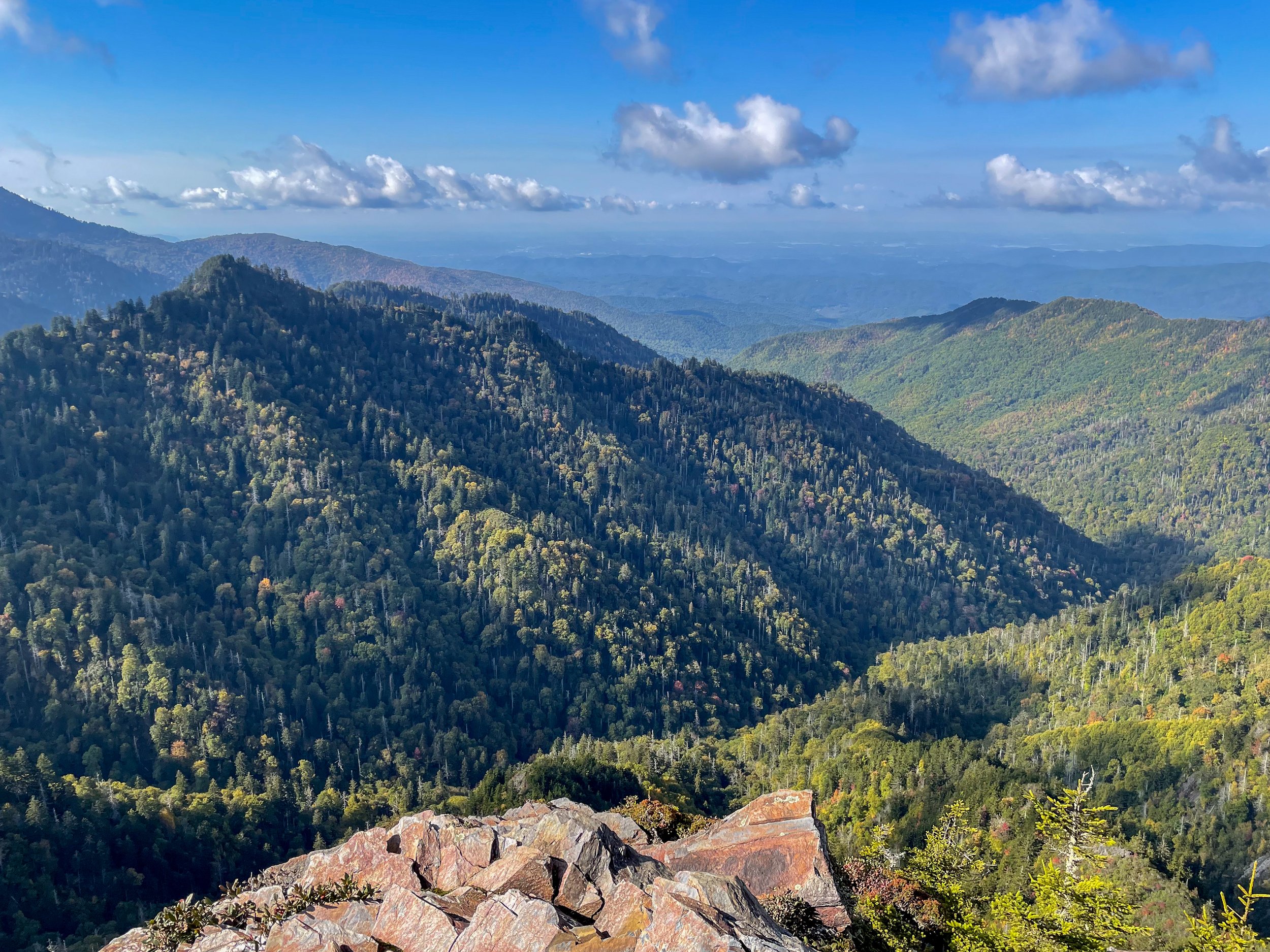
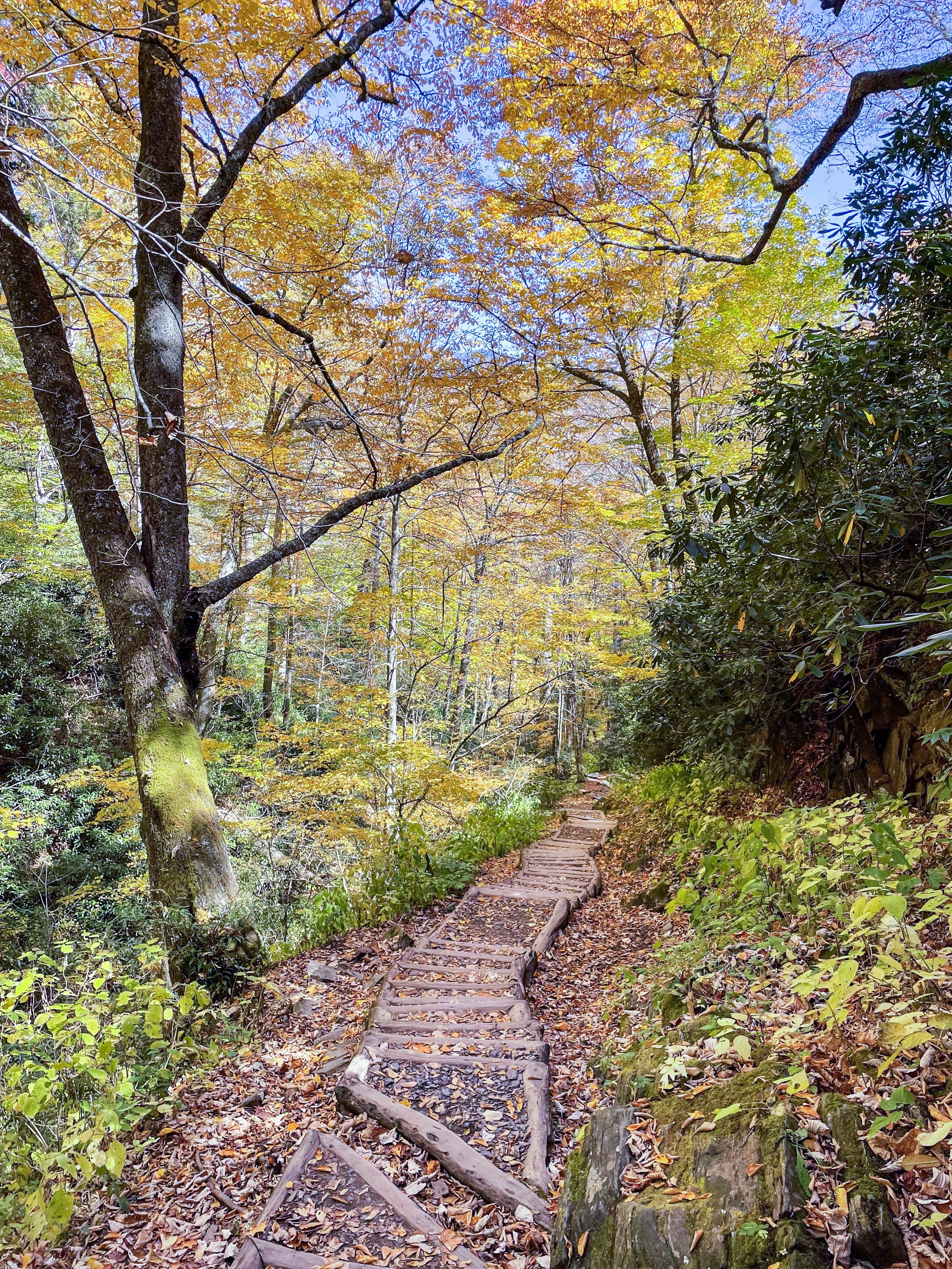




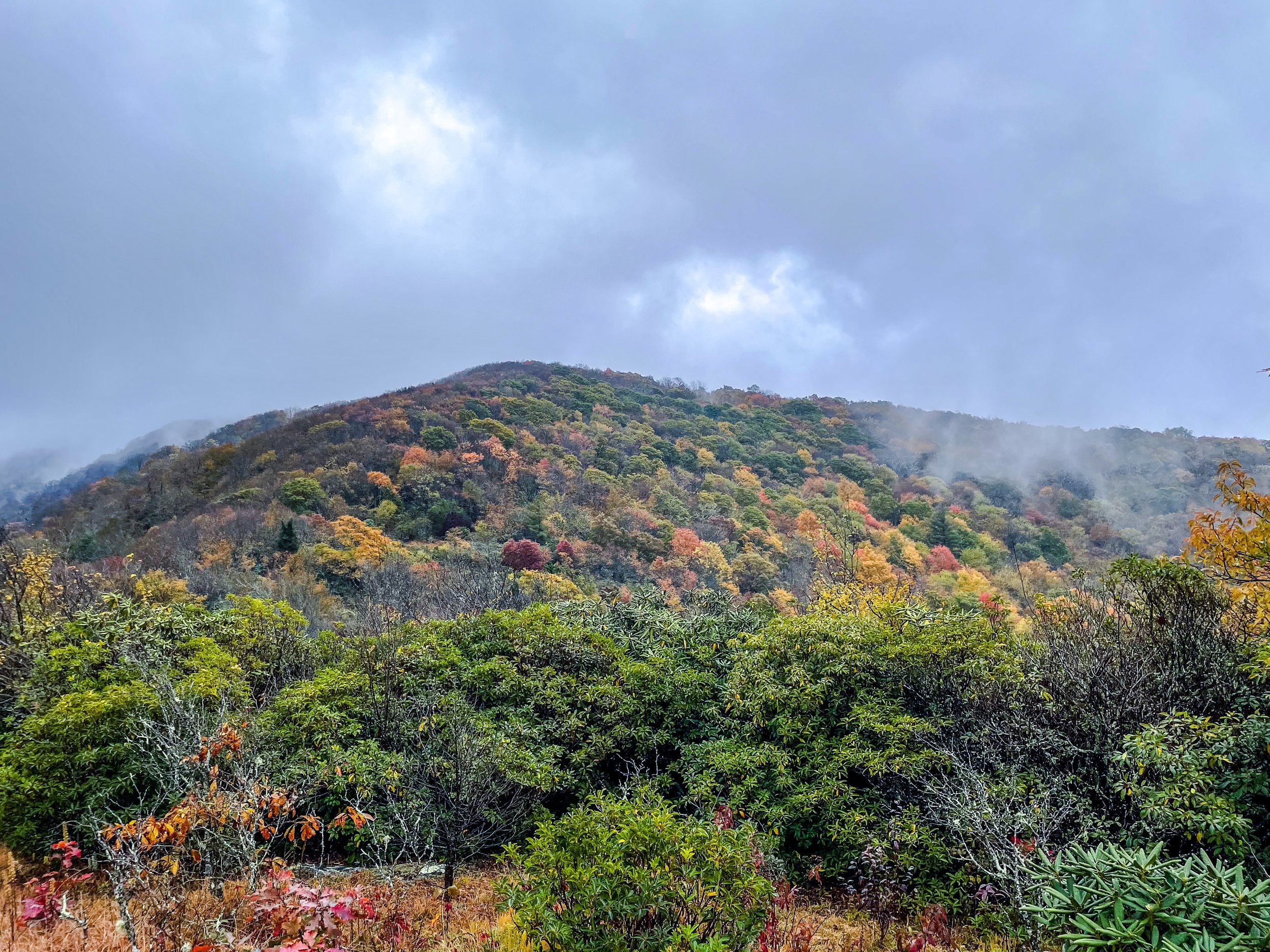
Eight years ago, the park service commissioned a collection of soil samples, which suggested the build-up of sulfites would soon burst into high-mountain streams. Soil layers at higher elevations are thin and lack the ability to buffer acidic rain deposits. Coordinated efforts by the federal government, via the Clean Air Act; the states of Tennessee and North and South Carolina; and the Tennessee Valley Authority to switch power plants from burning coal to natural gas are helping. Visibility has improved from an average of 9 miles to 40 miles over the course of 20 years, but the deposits are more than the soil and forest canopy can bear.
“The effects will get worse before they get better,” said NPS research coordinator Paul Super. “Recovery is going to take a lot longer than just cleaning smokestacks.”
An array of scientists — from geologists to meteorologists to biologists — are racing to understand the complex interactions between pollution and weather changes, and their effects on park ecosystems. For decades, the park has averaged between 50 to 80 inches of annual rainfall. Over the past 10 years, however, more extreme events have occurred. Rainstorms are heavier, leading to flash floods and mudslides, and droughts drier, turning grasses and branches to tinder. While smaller wildfires can contribute to healthy biodiversity, the increased tinder can fuel a major blaze. In 2016, for example, the Chimney Tops 2 fire burned 11,000 acres of the park.
“One thing to remember: increasing biodiversity is scale dependent,” Super said.
When the Chimney Tops 2 fire cleared the tree canopy, never-before-seen fungi species emerged, having lain dormant for decades, waiting for the right conditions. But clearing wide swaths of old-growth forest destroys the habitats of species that depend on a larger contiguous area. And so wildfires force competition among species.
At age 8, this little hiker was the youngest in the author’s expedition. They’re seen here hiking the Road Prong Trail, with a pinnacle of bedrock jutting from the forest floor in the foreground. Image credit: Jeffrey Rose, edits by Rachel Lense for The Science Writer
When a grove of hemlock trees along the mountains’ riverbanks withers under stress from drought and invasive species, sunlight raises the air and water temperatures, sending land and aquatic species in search of reprieve. Insects such as the stonefly have migrated about 150 meters upslope in the past 40 years, longitudinal park studies have shown. The problem then becomes one of real estate, as land area shrinks with elevation.
Visitors, too, are taking their toll. Social media influencers post the best picture spots online, creating long lines of amateur photographers in the park. “The over-visited sites can look like a wild concert took place by the end of the day,” Witcher said. “Unfortunately, our visitors are loving the park to death.”
In 2023, park service members were overwhelmed by the over 14 million visitors pouring through the Smokies — more than the next three most-visited national parks combined. As federal funds have dwindled, the nonprofit Friends of the Smokies has created an endowment for trail maintenance. While park caretakers welcome visitors, their message to tourists is to consider the impact they make both during and after visiting. Looking for less-crowded side trails gives over-visited areas time to heal, and stopping to take a picture of a bug or funky moss helps document its complex ecology. Treading lightly through the park and taking the time to learn about its complex landscape represent our best hope for preserving an ecosystem that started to take shape nearly half a billion years ago.
Jeffrey Rose
Jeffrey Rose escaped snowy Ohio as a child to land in sunny Florida. He attended the University of Florida for his B.A. in biochemistry and physics, and remained at UF to finish an M.D. and general surgery residency. He served in the Air Force for four years, then returned to Gainesville to enter private practice. He will complete an M.A. in Science Writing from Johns Hopkins University in 2024. When he’s not caring for patients or writing, Rose is usually lost on a walk, cooking dinner with his wife, or trying to manage his two unruly teenagers.
Senior Editor: Lindsey Leake
Art Editor: Rachel Lense
Copy Editor: Christopher Graber

